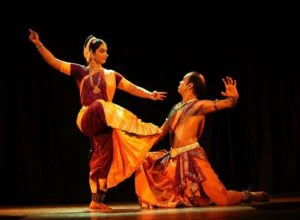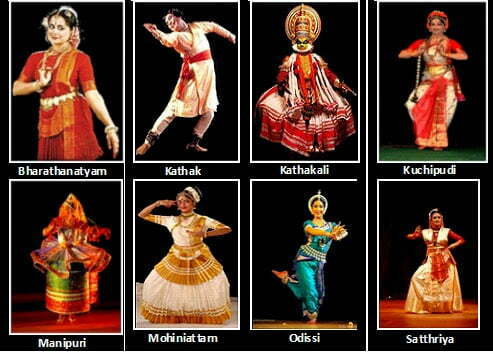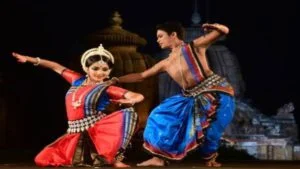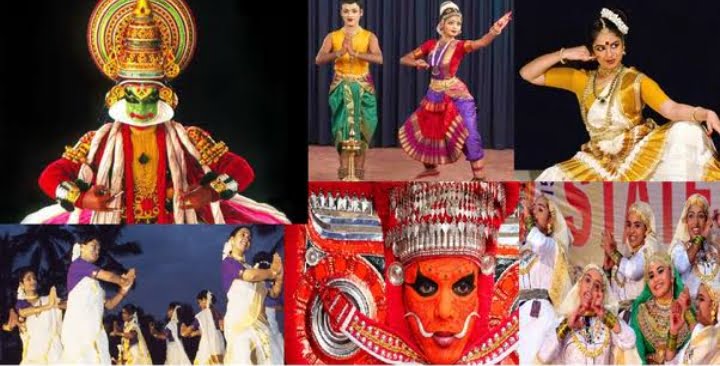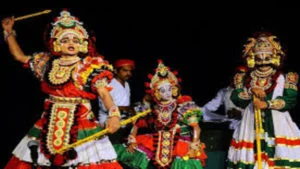India is known throughout the world for its cultural diversity. However, when we talk about the quintessential royal fare complete with elephant rides, colourful lehengas and brilliant maths- Rajasthan immediately comes to the fore. Known as the Royal Haven of India, though Rajasthan is an arid state, it brims with cultural richness, Folk dances from Rajasthan are an important and enjoyable aspect of its cultural history.
Historically, Tribal affairs have dominated the culture of Rajasthan. Their effect is also remarkable on the art , culture and folk-dances of Rajasthan. Rajasthani folk dances were performed by these communities and later on accepted by Royal families.
Podium School, therefore, strives to bring you the best dance forms from this regal destination in the desert sands. We hope that when you reach the end of this article- your knowledge about dances from Rajasthan goes far beyond Ghoomar and Gangaur.
Ghoomar
This dance was introduced by the Bhil tribe in Rajasthan and later on accepted by Royal families.It also got fame from Padmavat Movie. This is one of the most famous dances of Rajasthan.It is generally performed on Holi, teej, Diwali and bride welcome.

To perform this dance , women wear traditional outfits. A long ghagra ( a long traditional skirt ) with a choli ( a blouse) is the main outfit of this dance. Dance carries on as by swaying , clapping hands and twirling around. Music taken is generally also a traditional music. You can enjoy this form of. dance in the Udaipur , Jodhpur and Bundi region of Rajasthan.
Kalbelia Dance
It is one of the most famous folk dances of Rajasthan and also known as Sapera dance. Because The steps of this dance are almost serpentine, it is also popular as the Snake Charmer dance. It Is famous as Kalbelia Dance because the Kalbelia community created it.Women wear the traditional outfits , Angrakhi ( a jacket), odhani( a veil) with a traditional long Ghagra. Songs are much interesting as they are based on folklore and mythological stories.

Kalbelia dance recognised as Intangible cultural heritage by UNESCO. Dance is performed with the music played by men with traditional musical instruments.Dholak, which is a two headed drum , Khanjri( musical instrument) and a pungi( a wooden – wind instrument) are the main musical instrument used in this type of dance.
Other musical instruments which are useful in this dance are Dhafli, Morchang and Dhol.You can enjoy this form of dance in the regions of Jodhpur , Jaisalmer, Bikaner , Barmer,Jalore, Jaipur and Pushkar of Rajasthan.
Bhavai Dance
You may have seen on television , Women balancing eight to nine pots on their heads . This form of dance is popular as Bhavai Dance.it takes a lot of hard work and practice to be perfect in this form of dance.

Musical instruments used are Sarangi, harmonium and Dholak.
In this dance women perform their Dance balancing eight to nine earthen pots on their heads. This ritualistic dance performed by the Kalbelia , Jaat , Meena, Bhill and Kumhar communities of Rajasthan.Sarangi and Dholak are main instruments in Kalbelia dance You can enjoy this form of dance in Jaipur, Jodhpur and Bikaner region of Rajasthan.
Kacchi Ghodi Dance
Kacchi Ghodi is a famous dance of Rajasthan originating in the Shekhawati region of Rajasthan . This dance enacts tales of local bandits which conveyed by Mock swords.

It mainly performed on the occasion of marriages and festivals.in this dance , men wear Dhoti, Kurtas and Turban and pretend to ride a dummy horse. You can enjoy this form of dance in the Shekhawati region of Rajasthan . Jaipur and Udaipur cities can also be major attractions of this dance.
Gair Dance
Gair dance originated from the bhil tribe community of Rajasthan.Both men and women perform this dance. It

Men wear a full length tunic like a skirt , carrying a stick and sword.On the other hand, women wear Ghagra – choli.On traditional music, men and women perform this dance rotating clockwise and anticlockwise. Dancers rotate, swinging their arms to the powerful drum.Dandi Gair and GreenDad are also some of the variations of this type of dance.Gair dance is popular mainly in the Mewar Region, Marwar Region and Shekhawati region of Rajasthan.
Chari Dance
Chari dance is a celebration of joy in Rajasthan. It is also a part of the ritual of Rajasthan of collecting water. Chari dance is traditional folk dance of Rajasthan. Saini and Gujjar community of Rajasthan perform this dance.Meaning of the word Chari is pot.

Chari dance mainly performed on special occasions like festivals and weddings. Women perform this dance while balancing the pot on their head , which has a lamp inside it. Musical instruments used are Nagada , Dhol and Harmonium. You can enjoy this form of dance in the Kishangarh region of Rajasthan.
Kathputli Dance
Kathputli dance is the most famous dance of Rajasthan and famous for the art of dancing puppets. It is the combination of the words Kath – which means wooden, and Putli – which means Puppet. Bhil community of Rajasthan perform this dance. It is a part of the incredible culture of Rajasthan. This traces back thousands of years from now. Puppets are generally one to two feet long. These puppets are controlled by Puppeteers via strings. They generally perform from behind the stage. Puppeteers are also good singers. And Some of the songs of the Kathputli dance depict social problems, others are also Mythological stories. Now Puppeteers are also moving to big cities in the search of employment.
Delhi, there is also a colony known as Kathputli colony. Because of living there a big population of Puppeteers.
Kathputli is such a great example of Indian handcraft culture. Some of the well -known organisations established by government and NGOs are also working to save the culture of Kathputli dance. The best place to enjoy it is the Marwar Region of Rajasthan.
Terah Taal
The meaning of Terah Taal is the thirteen manjeeras. It is popular as the Terah Taal because thirteen anjiras are attached to the body of women.Women of the Kamada Tribe performs this dance. While dancing,these Manjiras make a rhythmic sound,which makes this dance much more attractive.
Women performs this , while Music played by male using akhwaja , Sarang , Dholak and Jhanjar.This dance is performed almost each type of festival. Main places to enjoy this form of dance are Dindwana, Durgapur and Udaipur.
Chang Dance
Chang dance is the centerpiece of the Rajasthan Holi festival. It originated from the Shekhawati region of Rajasthan. It is popular as Chang dance , because it takes place on fast-paced rhythmic beats of the Chang musical instrument.

Some men wear traditional outfits like women, and perform Ghoomar. This makes this dance much more attractive. The Chang dance festival continues from Mahashivratri to the day of Dulhendi, a day after Holi. The best place to enjoy this dance in Rajasthan is the Shekhawati region.
The fire dance
It is one of the most dangerous dance .Banjara community performs this dance. While dancing , dancers produce flames from their mouths. This makes this dance very enjoyable and amazing.
This needs the full attention and a lot of practice of a dancer. Otherwise, it can lead to any injury. But these dancers are so talented that you’ll rarely see such a type of accident during a fire dance. Bikaner, Jaisalmer and Jodhpur are some of the best places where you can enjoy this form of dance.
Rajasthan is the home of art and culture and is the main tourist spot of India. It’s various dance forms make it a more fascinating tourist spot. Rajasthan State not only adopted the social and climatic problems but made it a part of their culture. They sing, they dance and perform the best arts of the world. So next time when you visit Rajasthan,Do not forget to enjoy these dances there . Rajasthan culture attracts you to know it more and more- Padharo mhare desh.
Share with your friends

